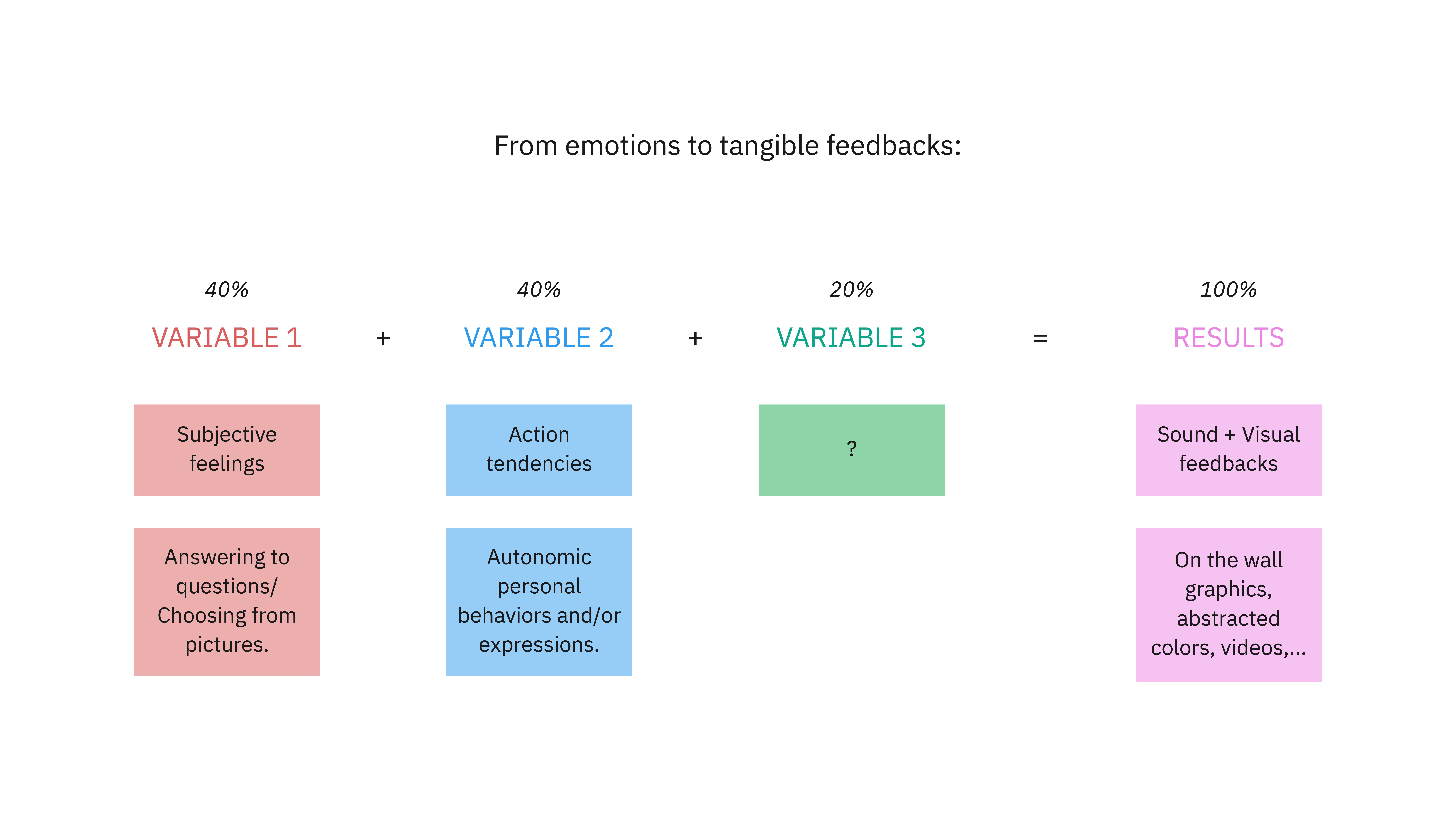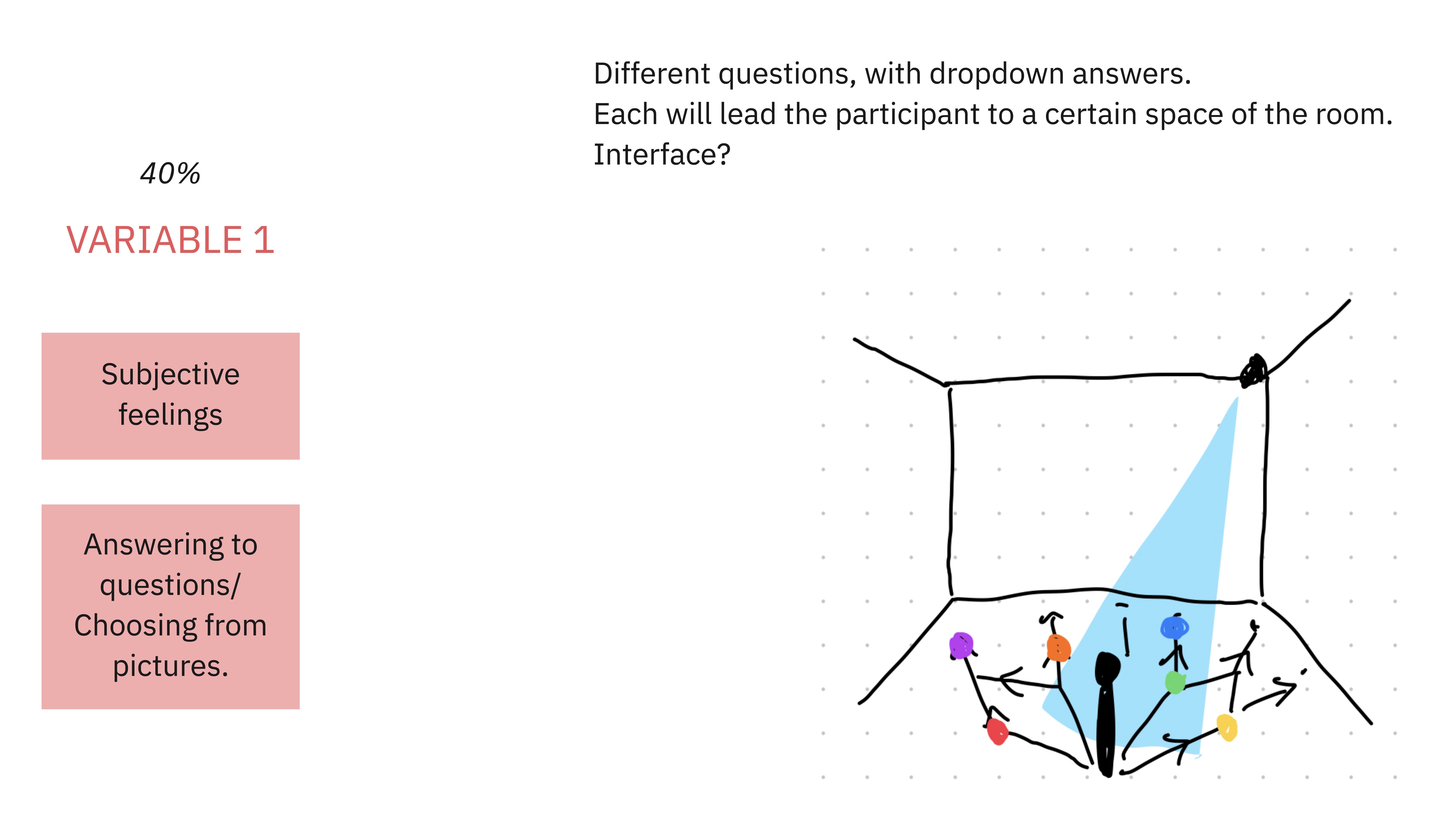Final Project
Proposal
An - for now
Simon Penny’s The Intelligences of the Arts talk was also a big inspiration to me when I watch him talk about "The culture of computer science entails commitment to a dualistic ontology of matter and information. (...) Software and hardware." and "We believe we have a mind and a body. (...) We believe there is immaterial information. What basic do we have for these beliefs?". The notions of having two seperate physical and mental states has always been fascinating to me. Especially when matter and information collapse, how can we tell the thin invisible powerful line between them?
Being said that, I started to wonder if our emotions are matter or information?
Several studies has been conducted on the connection between our two mental and physical states, including Stewart-Brown‘s Emotional wellbeing and its relation to health, where it stated that emotional distress can more likely cause physical diseases than we ought to think. So, how would the distress looks, or sounds like if we can put them in tangible forms?
Project overall:
- An art performance/installation.
-
Focus on bringing the “matter” into “information”, and vice-versa.
-
Audio-visualizing the unspokens and intangibles.
- Exploring the inseparable, yet detached, relationship between the body and the mind.
Rough sketches of the possible setup:

Using proxemic & body tracking technology, the participant’s position and behaviours will be recorded and transfer into immersive audio-visual feedbacks. The feedbacks will be made based on the “emotions” detected from the participants, and the walls around also act as interactive interface/ system.
From emotions to tangible feedbacks:
One of thes most challenging and interesting feature of the project is how to transfer detected emotions into tangible results. As this is just the initial concept, my imagination went a bit wide and suggested the following method:

The variables can be broke down to:


For variable 1, Subjective Feelings will be measured by asking participants different sets of questions, which lead to several dropdown answers. The participant will then chose their answer from the set and each will lead them to a certain space of the room. As subjective feelings plays a big role in one person’s emotions, this variable presents 40% of the final result.
Variable 2, Action Tendencies will be taken into account due to its intense demonstration of how one person is feeling to their outside behaviour. Two examples (not literally but rather figuratively) from Ortiz-Millán and Emily et al shows 2 different situations between love and anger:
“In general, and when not interfered with by other emotions, love has three characteristic action tendencies, which we can also identify with the kinds of desires that it may generate: (1) the desire for reciprocation, (2) the desire to benefit, and (3) the desire to be with, the beloved.”
“In each case, situations that activate anger, for example, will motivate an organism to engage in a certain set of anger behaviors (fist clenching, threat display, and physical or verbal attack). The organism can then execute the behavior that is most adaptive in the situation.”
Lastly, variable 3 is not yet defined and can possibly plays 20% of the whole calculation. It is open to several other emotions measurement such as autonomic responses, facial espression or body temperature. The decision would depends a lot on the technically ability.
The different emotions measurements were mentioned in this video from Swiss Center for Affective Sciences:
Ambitiously, and for example, the emotions calculation idea is desired to be something similar with this iconic system of proxemic that Edward T. Hall created:

Initial list of requirements:
In order to execute the concept to its best capacity, the following elements will need to be met:
- A whole room/ a decent spacy space.
-
Body tracking: TouchDesigner with Kinect/Mediapipe/Lidar, tracking camera(s).
-
Several projectors and speakers.
- More research on how to define and combine variables.
Projects limitations/concerns:
Although I’m happy and really love to make this project come true, there are big and unavoidable limitations that it has:
- All emotions are too wide and complex to cover. → can distinguish them into categories.
- Do we expect people to have strong expressive emotions when coming to an art exhibition? → probably not.
The emotion categories can be put into something similar to this Abraham Hicks’s Emotional Guidance Scale (although more thoroughly research would be needed):

References:
Penny, S. (2018). The Intelligences of the Arts: Embodiment, Materiality and Cognition. Design Lab. https://www.youtube.com/watch?v=PU_WDouhkw8
Ortiz-Millán, G. (2007). Love and rationality: on some possible rational effects of love. https://doi.org/10.1590/S0100-512X2007000100008
Emily, M., Arthur ,M., David, H. & Lisa L. (2007). Difference in Action Tendencies Distinguish Anger and Sadness after Comprehension of Emotional Sentences.
https://escholarship.org/uc/item/1w30t070
Hall, Edward T. (1969). The hidden dimension. Garden City, N.Y. : Anchor Books.
Hicks, E., Hicks J. (2004). Ask and It Is Given: Learning to Manifest Your Desires. Hay House.